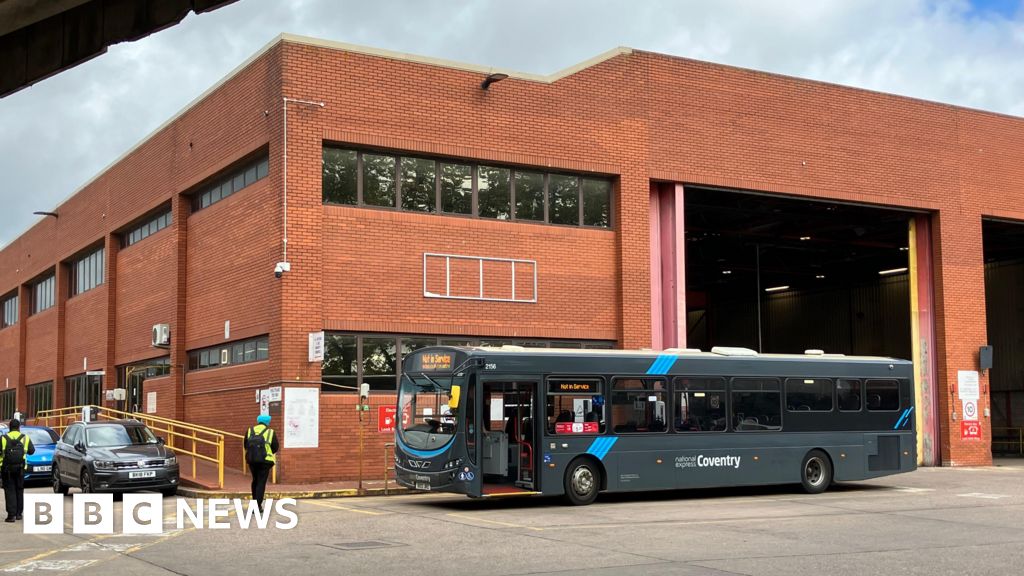Electric school buses give students a healthier ride. The break from pollution could also help their grades – Georgia Public Broadcasting

Report on the Contribution of Electric School Buses to Sustainable Development Goals
Introduction and Overview
This report analyzes the transition to electric school buses in the United States, with a particular focus on initiatives in Georgia. The adoption of electric vehicle (EV) technology in student transportation, accelerated by federal funding, presents a significant opportunity to advance several of the United Nations’ Sustainable Development Goals (SDGs). This transition moves beyond a simple vehicle upgrade, representing a strategic investment in public health, education, and environmental sustainability.
Advancing Good Health and Well-being (SDG 3)
The replacement of traditional diesel-powered school buses with electric alternatives directly supports SDG 3, which aims to ensure healthy lives and promote well-being for all at all ages.
- Reduction in Air Pollutant Exposure: Electric buses produce zero tailpipe emissions, eliminating student exposure to harmful pollutants such as particulate matter (PM2.5) and nitrogen oxides (NOx) commonly found in diesel exhaust. This directly addresses SDG Target 3.9, which seeks to substantially reduce the number of deaths and illnesses from hazardous chemicals and air pollution.
- Improved Children’s Health: Children are uniquely vulnerable to the health impacts of air pollution. By creating a cleaner transit environment, electric buses can lead to a decrease in respiratory conditions like asthma, allergies, and other related health issues among students.
Enhancing Quality Education (SDG 4)
The health benefits derived from cleaner air on school buses have a direct and positive correlation with educational outcomes, contributing to the achievement of SDG 4: Quality Education.
- Improved Cognitive Function: Research indicates a strong link between reduced exposure to air pollution and enhanced cognitive performance and concentration in students. A healthier ride to school can translate into improved academic results and higher test scores.
- Reduced School Absenteeism: By mitigating health problems associated with poor air quality, electric buses can help reduce student absenteeism, ensuring more consistent attendance and participation in educational activities.
Fostering Sustainable Infrastructure and Climate Action (SDGs 7, 11, and 13)
The large-scale adoption of electric school buses is a critical step in building sustainable infrastructure and combating climate change, aligning with multiple interconnected SDGs.
- SDG 7: Affordable and Clean Energy: This transition promotes the integration of clean energy into the public transportation sector, reducing dependence on fossil fuels and supporting the broader shift toward sustainable energy systems.
- SDG 11: Sustainable Cities and Communities: Electric buses contribute significantly to creating more sustainable urban and rural environments by:
- Improving local air quality, a key component of SDG Target 11.6.
- Providing a model for safe, accessible, and sustainable transport systems, as called for in SDG Target 11.2.
- SDG 13: Climate Action: The shift from diesel to electric fleets is a direct climate mitigation strategy. It reduces the carbon footprint of school districts by cutting greenhouse gas emissions, contributing to national and global efforts to take urgent action to combat climate change.
Implementation through Partnerships for the Goals (SDG 17)
The successful implementation of this transition relies on effective collaboration, underscoring the importance of SDG 17: Partnerships for the Goals.
- Governmental Support: Federal funding programs have been instrumental in jumpstarting the transition by helping school districts overcome the initial high capital costs of purchasing electric buses and installing charging infrastructure.
- Multi-Stakeholder Collaboration: The initiative requires a robust partnership between government bodies, local school districts, energy utilities, and private sector vehicle manufacturers to ensure a coordinated and effective rollout.
- Scalability and Future Outlook: While the transition is in its early phases, it establishes a scalable model for sustainable public infrastructure projects that can be replicated and expanded, demonstrating a commitment to long-term sustainable development.
Analysis of Sustainable Development Goals (SDGs) in the Article
1. Which SDGs are addressed or connected to the issues highlighted in the article?
- SDG 3: Good Health and Well-being: The article’s title, “Electric school buses give students a healthier ride,” and the keyword “Children’s Health” directly link the transition to electric buses with improving the health of students by reducing their exposure to harmful pollution from diesel exhaust.
- SDG 4: Quality Education: The article suggests a direct link between reduced pollution and improved educational outcomes with the phrase, “The break from pollution could also help their grades.” This implies that a healthier environment contributes to better cognitive function and academic performance.
- SDG 11: Sustainable Cities and Communities: The focus on improving “air quality” through cleaner transportation (“electric school bus,” “electric vehicle”) is central to creating more sustainable and healthier communities, particularly for children who use this form of public transport.
- SDG 13: Climate Action: By promoting a shift from diesel-powered buses to electric ones, the initiative described in the article contributes to climate change mitigation. This transition reduces greenhouse gas emissions, aligning with broader environmental goals mentioned under the “Environment” keyword.
2. What specific targets under those SDGs can be identified based on the article’s content?
-
Target 3.9: By 2030, substantially reduce the number of deaths and illnesses from hazardous chemicals and air, water and soil pollution and contamination.
- The article’s main premise is that replacing diesel buses with electric ones reduces students’ exposure to air pollution, directly addressing the goal of lowering illnesses caused by air contamination.
-
Target 4.a: Build and upgrade education facilities that are child, disability and gender sensitive and provide safe, non-violent, inclusive and effective learning environments for all.
- A “safe” and “effective” learning environment includes the journey to and from school. The article argues that electric buses provide a healthier and therefore safer ride, which can lead to better academic performance (“help their grades”), thus contributing to a more effective learning experience.
-
Target 11.6: By 2030, reduce the adverse per capita environmental impact of cities, including by paying special attention to air quality and municipal and other waste management.
- The initiative to introduce electric school buses is a direct action to improve urban “air quality,” thereby reducing the negative environmental impact of transportation systems within communities.
-
Target 13.2: Integrate climate change measures into national policies, strategies and planning.
- The article mentions that the transition was “jumpstarted by federal funding during the Biden administration,” indicating that climate-friendly transportation solutions are being integrated into national policy and planning.
3. Are there any indicators mentioned or implied in the article that can be used to measure progress towards the identified targets?
-
Indicator for Target 3.9 & 11.6: Ambient air quality.
- The article’s focus on “air quality” and a “break from pollution” implies that a key metric for success would be the measurement of air pollutants (like particulate matter and nitrogen oxides) inside and around schools and buses. A reduction in these pollutants would indicate progress.
-
Indicator for Target 4.a: Student academic performance.
- The suggestion that the change “could also help their grades” implies that progress could be measured by tracking changes in student test scores, attendance rates, or other academic metrics in schools that have adopted electric buses.
-
Indicator for Target 11.6 & 13.2: The number and proportion of electric vehicles in the public transport fleet.
- The article discusses the “transition to electric school buses” as being in its “early stages.” A direct indicator of progress is the number of diesel buses replaced by electric ones, funded through programs like the “federal funding” mentioned.
4. Summary Table of SDGs, Targets, and Indicators
| SDGs | Targets | Indicators |
|---|---|---|
| SDG 3: Good Health and Well-being | 3.9: Substantially reduce illnesses from air pollution. | Reduced levels of air pollutants inside and around school buses; Lower incidence of respiratory illnesses among students. |
| SDG 4: Quality Education | 4.a: Provide safe and effective learning environments. | Improvement in student academic performance and grades. |
| SDG 11: Sustainable Cities and Communities | 11.6: Reduce the adverse per capita environmental impact of cities, paying special attention to air quality. | Measurements of local air quality improvement; The proportion of the school bus fleet converted to electric. |
| SDG 13: Climate Action | 13.2: Integrate climate change measures into national policies and planning. | The existence and scale of “federal funding” programs to support the transition to electric vehicles. |
Source: gpb.org

What is Your Reaction?
 Like
0
Like
0
 Dislike
0
Dislike
0
 Love
0
Love
0
 Funny
0
Funny
0
 Angry
0
Angry
0
 Sad
0
Sad
0
 Wow
0
Wow
0













































































